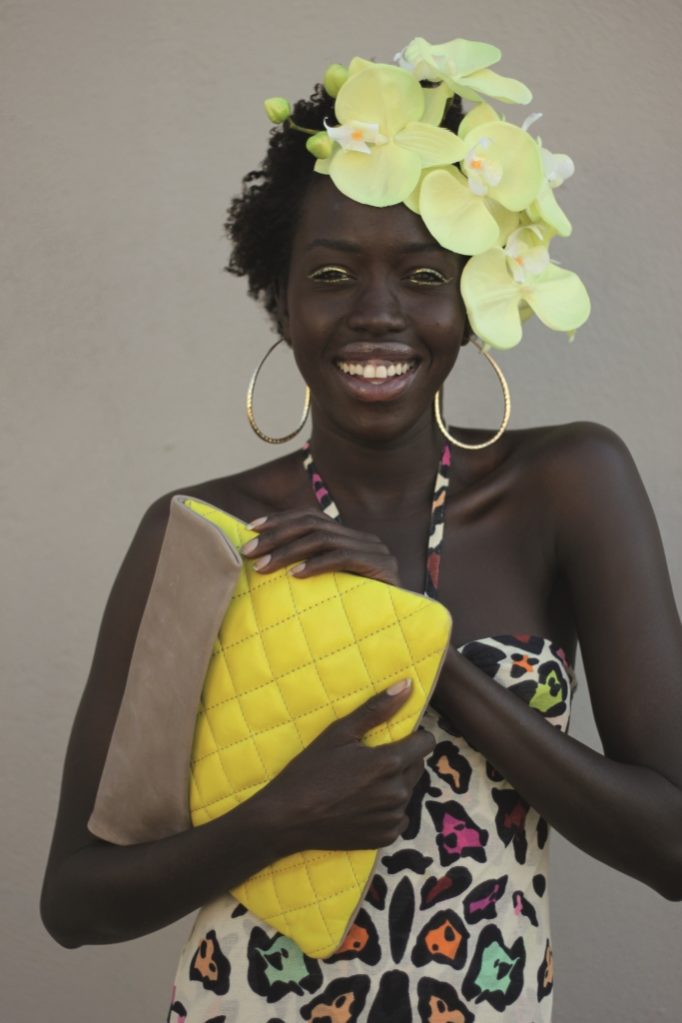The first thing you notice about a FOMI Collection handbag is the unmistakeable African pattern that adorns it. Next is the intricate stitching that binds it, followed by the refined leather finish.
And then you know the origin of this luxury product – Ethiopia.
The handbags and accessories are the creation of Afomia Tesfaye, the Ethiopian-born founder of the FOMI Collection that’s now sold in the airy, arty boutiques of Los Angeles (LA).
Although Ethiopian, Tesfaye has not lived in her home country since the age of three. That’s when her family moved to England, leaving thereafter to Washington DC in the United States (US), where her father served as the Ethiopian Ambassador to the US, before relocating yet again to San Diego, California.

Tesfaye went to the University of California in LA, and visited Ethiopia in 2010. That’s when she was struck with the idea of starting her own business in her home country.
“My professional goal was to someday develop a design company, and on a visit to Ethiopia, I began playing with the idea of starting a business. At the time, I really had no idea what I wanted to do,” says Tesfaye.
But she was determined to pursue her dream, even giving up her public relations job for it.
“I began by visiting tanneries and was so impressed with the quality of the leather. That sparked the idea to work with leather in some way and handbags felt like a natural way to begin,” she says.
The following year, she designed a small collection of handbags and wallets she took back to America and sold to small boutiques in LA. As fine wine would be received, so were her products, and they were soon sold out.
Her next big break was receiving an order from Anthropologie, the famous American women’s clothing retailer with over 175 stores globally. There were however snags to Tesfaye’s start, as with every new business.
“The first couple of seasons, I dealt with so many issues: discolored leather and suede, lack of available zippers and accessories within the country, shipping merchandise that arrived late to retailers [and so on],” she says.
But she admits that just as she was developing as a designer, Ethiopia’s manufacturing capabilities also strengthened and “the mistakes have lessened”.
Today, Ethiopia is considered an emerging textile hub, and international retail brands such as H&M and Primark are looking to set up shop in the East African country as its textile industry’s production grows more globally competitive. UK supermarket chain Tesco also plans to expand its sourcing operations to Ethiopia.
It is however easy to overlook that Ethiopia, like many other African countries, has a wide gap between rich and poor, and an even smaller demand for luxury goods than its major African counterparts.
Nevertheless, Ethiopia’s GDP in 2013 was larger than its East African neighbors. According to the World Bank, Ethiopia’s GDP in 2013 was recorded at $46.8 billion, followed by Kenya at $44.1 billion and Tanzania at $33.2 billion.
FOMI Collection’s luxurious tassels will therefore sooner or later find a stronger demand from the same expanse that provides it with material and labor.
All the leather Tesfaye sources for her products are Ethiopian indigenous materials, a variation of highland sheepskin, goatskin and cowhide. Highland sheepskin in particular is considered to be among some of the most refined leather.

“I want FOMI Collection to be appreciated for its quality and aesthetical value, not for people to buy it because they pity Ethiopia. I use a small workshop in Addis Ababa and work with several skilled men and women who are paid well above the standard salary. The more successful I become, the more people I am able to employ, which is the value that I bring to the country,” she says.
Her work between her birthplace and LA also means her collection gets the best of both worlds in terms of design and creativity.
“In Ethiopia, I often drive outside the capital city for work, in chaotic traffic passing goats and donkeys on the side of the road. LA is the polar opposite, it is the mecca of entertainment, fashion and art which is stimulating in so many other ways. I am creatively and culturally inspired in both cities and feel lucky to be able to experience life in such different environments.”
